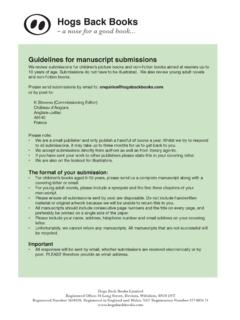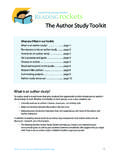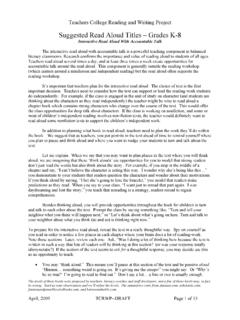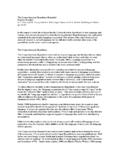Transcription of Favorite Books K-6 National - Florida Standards
1 Picture-Perfect Science Karen Ansberry and Emily Morgan - 1 - Favorite Children s Picture BooksPicture Books for for Teaching ScienceTeaching Science inin Grades Grades KK--66 The following Books are a selection of our Favorite science-related picture Books aligned with the National Science Education Standards for kindergarten through grade six. See also for the Outstanding Science Trade Books for Children (a cooperative project between the National Science Teachers Association and the Children s book Council). *Indicates titles featured in Picture-Perfect Science Lessons: Using Children s Books to Guide Inquiry Grades 3-6, Revised Expanded 2nd Edition by Karen Ansberry and Emily Morgan (published by NSTA Press). ** Indicates titles featured in More Picture-Perfect Science Lessons: Using Children s Books to Guide Inquiry Grades K-4 by Karen Ansberry and Emily Morgan (published by NSTA Press).
2 SCIENCE AS INQUIRY Big Tracks, Little Tracks: Following Animal Prints. Millicent E. Selsam. HarperTrophy (1999). This Let s-Read-and-Find-Out Science book (Stage 1) shows readers that keeping a sharp eye out for clues like animal tracks and odors can help them infer the identity of the animals that have passed through an area. Being a Scientist. Natalie Lunis and Nancy White. Newbridge Educational Publishing (1999). Children discover that they are already scientists when they explore some of the key science skills, such as observing, measuring, and recording data. Available in big book format. Counting on Frank. Rod Clement. Gareth Stevens Publishing (1991). This is a story about a boy who likes to ask questions about the ordinary things around us like ball-point pens, peas, and his dog Frank. The best and biggest question is of course, "What " "What if I drew with this ball point pen until it ran out, how long would the line be?
3 What if I ran this bath and the room filled up with water, how long would that take?" These are the sort of questions that all kids ask. The difference is that this kid has the answers. This is a great introduction to questioning, estimating, counting, and calculating in science. *Dr. Xargle s book of Earthlets. Jeanne Willis. Andersen Press (2003). This outrageously funny picture book features a green alien known as Dr. Xargle, who instructs his class on the appearance and habits of "Earthlets" (human babies) before embarking on a field trip to Earth. Bath-time, feeding and changing diapers are all given a new slant through Dr. Xargle s wildly incorrect inferences about human behavior. Use this book to spark discussion on the difference between observation and inference. Picture-Perfect Science Karen Ansberry and Emily Morgan - 2 - ** How Big is a Foot?
4 Rolf Myller. Young Yearling (1962). The King has a problem. He wants to give the Queen a bed for her birthday, but no one knows the answer to the question How big is a bed? How Many Seeds in a Pumpkin? Margaret McNamara. Schwartz & Wade Books (2007). "How many seeds in a pumpkin?" Mr. Tiffin asks his class as they gather around the big, medium, and small pumpkins on his desk. Counting pumpkin seeds is messy business, but once the slimy job is done, to everyone's surprise, the smallest pumpkin has the most seeds! This book captures the fun and excitement of a math and science project that can be undertaken in your own classroom as you read along. **How Tall, How Short, How Far Away. David Adler. Holiday House (1999). This fun, cartoonishly-illustrated book explains how systems of measuring developed in ancient Egypt and Rome; how measurements became standardized; the origin of the metric system; and methods of measuring length, height, and distance.
5 The text's simplicity makes the ideas clear and easy to follow. A good basic book for children who are learning measurement using either the customary or metric system or (more likely) both. In the Snow: Who s Been Here? Lindsay Barrett George. Greenwillow Books (1995). Two children on their way to go sledding see evidence of a variety of animal life. The reader must infer from the evidence what animals had been in each location. Each time, the answers are revealed on the next page. Also by this author: Around the Pond: Who s Been Here? and In the Woods: Who s Been Here? Investigating Your Backyard. Natalie Lunis. Newbridge Educational Publishing (1999). Children learn that nature is all around them. Whether their backyard is a park, a seashore, or a patch of grass, it is full of discoveries waiting to be made. Available in big book format. Is a Blue Whale the Biggest Thing There Is?
6 Robert E. Wells. Albert Whitman and Co. (1993). Relative sizes--of whales, mountains, planets, galaxies, with stacked bowls containing 100 whales, stacked Mt. Everests, bags holding 100 Earths next to the sun, 100 suns, etc. This book about numbers and size should foster an appreciation of scale and accuracy. Just a Little Bit. Ann Tompert. Houghton Mifflin/Walter Lorraine Books . (1996). When an elephant and a mouse try to play on a seesaw, they need help from a vast number of animal friends to balance the scales. Let s Experiment. Natalie Lunis and Nancy White. Newbridge Educational Publishing (1999). Questions, predictions, hypotheses, observations, records, conclusions children get hands-on practice through a series of classroom experiments. Available in big book format. **Lucas and His Loco Beans: A Bilingual Tale of the Mexican Jumping Bean. Ramona Moreno Winner.
7 Brainstorm 3000 (2003). With English as the main language, Lucas tells the story of a summertime visit to his grandfather's ranch, where he learns about the Mexican Jumping Bean and how his abuelo (grandfather) collected them to play with as a boy. Grandfather tells Lucas about the moth larva that inhabits the bean until it turns into a moth. In the back of the book there are four pages of diagrams explained in both Spanish and English. Makes a great follow-up to an inquiry activity with Mexican Jumping Beans. Me and My Senses. Joan Sweeney. Crown Books for Young Readers (2003). Full of easy-to-understand text and bright corresponding illustrations Sweeney s readers have come to expect, Me and My Senses introduces children to the five senses and teaches the basics of how they work. My Five Senses. Aliki. HarperCollins (1989). Sight, smell, taste, hearing, and touch our senses teach us about the world.
8 Children discover how they use their five senses. Measuring Penny. Loreen Leedy. Henry Holt and Co. (1997). Lisa learns about measurement by measuring her dog Penny with all sorts of units, including pounds, inches, dog biscuits, and cotton swabs. *Popcorn! Elaine Landau. Charlesbridge (2003). Full of information about popcorn, including where it comes from, its history, and what makes it pop. Picture-Perfect Science Karen Ansberry and Emily Morgan - 3 - The Popcorn book . Tomie de Paola. Holiday House (1978). Presents a variety of facts about popcorn and includes two recipes. Read to students before testing the question, Which brand of popcorn pops the most kernels? Popcorn Plants. Kathleen V. Kudlinski. Learner Publications Company (1998). With the help of detailed photographs, this book describes the life cycle of a popcorn plant. It begins with the farmer planting the seeds and ends with the kernel exploding.
9 Science Tools. Randolph. Newbridge Educational Publishing (1999). Students learn how to measure, collect specimens, and gather data, and the importance of data to a scientist. Available in big book format. Scientists Ask Questions. Ginger Garrett. Children s Press (2004). This Rookie Read-About Science book introduces young readers to scientific investigation. Colorful photos and simple text encourage children to read on their own as they learn how scientists use tools and conduct experiments to answer questions. *Seven Blind Mice. Ed Young. Philomel (1992). In this retelling of the classic fable, each of seven blind mice visits an elephant and infers that he has discovered a pillar, a snake, a cliff, a spear, a fan, or a rope. But the seventh mouse is the only one who investigates the whole object and through careful observations is able to discern that it is an elephant.
10 Illustrates the importance of making careful observations and collecting evidence to develop explanations. Be sure to initiate a discussion on anthropomorphism after reading the book together. Tiger Math: Learning to Graph from a Baby Tiger. Ann Whitehead Nagda and Cindy Bickel. Henry Holt (2000). , a tiger cub whose mother at the Denver Zoo died when he was only ten weeks old, was raised by the zoo hospital. Appropriate picture, bar, circle, and line graphs depict 's weight gain, his father's weight at the same age, and how much meat ate as he grew, while crisp color photos show the young tiger cub's antics. This is one of the few trade Books available to supplement classroom units on graphing. Measure and chart a class pet s growth while reading the book . Weight. Henry Pluckrose. Children s Press (1995). Vibrantly colored photographs of familiar objects combine with informative text to teach children about weight.








